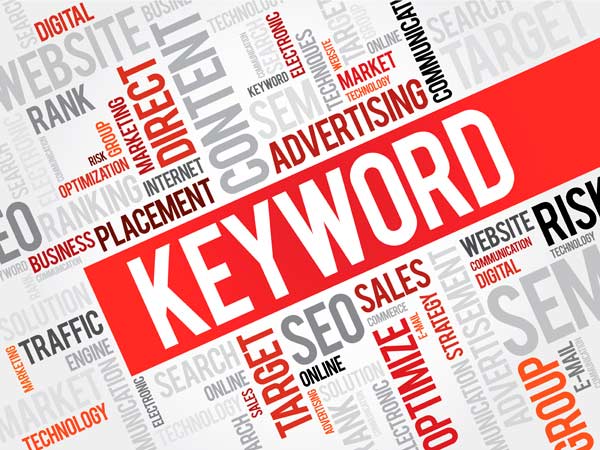Compared to Google AdWords, Twitter Keyword Targeting in Timelines is less popular, thus not too many business owners (especially SMBs) are well acquainted on how it works and how they can benefit from it. It is also interesting to take note that this advertising platform is specifically designed for small to medium businesses. If you haven’t tried it yet, then keep on reading.
What is Twitter Keyword Targeting in Timelines?
This is Twitter’s advertising platform that can be compared to Google’s AdWords. Although the latter targets search engine users and the former targets its microblogging users, both platforms are into target marketing that uses each of their algorithms to filter audiences based on what their clients specify.
According to Twitter, keyword targeting in timeline enables a business to reach the right people, at the right time, and in the right context. This helps small business owners reach their target audience inside the microblogging network based on keywords in their recent tweets and in the posts (tweets) they have recently or currently engaged with.
The Good Side
The number of active Twitter users has been increasing through the years. It has increased by more than 50 million in the past year and is expected to increase as mobile usage keeps on rising. Also, it is predicted (http://www.statista.com/statistics/183466/share-of-adult-us-population-on-twitter) that on this year, 1/5 or 20.5% of internet users in the country are expected to get their own Twitter accounts. These figures are always good news and can open up opportunities for small and medium businesses.
Twitter Keyword Targeting in Timelines is mainly beneficial if your target audience mostly hang out in the microblogging site. This is because its main purpose is to drive Twitter users off to your landing page. This increases your leads and boost the chances of getting successful conversions.
Similar to Google AdWords, Twitter’s advertising platform uses keywords to target specific prospects based from their interest, geographic location, and other relevant factors. According to some experts, it is typically a less expensive alternative to Google AdWords. But then, this is debatable since cost varies depending on the competitiveness of the keywords use in a campaign.
Twitter (https://support.twitter.com/groups/58-advertising/topics/254-targeting/articles/20170404-keyword-targeting-in-timeline-overview) shares the top 4 benefits in using keyword targeting in timelines:
- Increases relevance of your brand messages to your target audience,
- Facilitates real-time marketing at scale,
- Drives physical world actions, and
- Serves a good complement to your search marketing campaign.
Despite all these benefits and advantages, Twitter Keyword Targeting also has its downside. Before deciding if you want to use it in your next social media campaign, find out first a few of its disadvantages.
The Bad Side
One of the most significant difference between Google AdWords and Twitter Keyword Targeting is their User Interface (UI). Those who are already used to the former’s user interface will have a bit of a hard time grasping the latter’s. Here’s what the experts from HubSpot (http://blog.hubspot.com/blog/tabid/6307/bid/32354/The-Pros-Cons-of-Twitter-Advertising-for-Small-Business.aspx) said about this.
“If you’re used to using Adwords, beware! The tracking and reporting within the Twitter ads interface are not nearly as robust. The simple joys of Adwords like pulling a spend-by-day report or geo report are nowhere to be found within Twitter’s UI. If you are a data-hound and need all of the data points that Adwords features, you’ll be at a loss with Twitter ads. The best thing to do if you’re running Twitter ads on your own is to keep track of key metrics on a daily basis such as spend, followers, clicks, leads, cost per engagement, and or cost per lead.”
Another downside, according to Zeendo (http://zeendo.com/info/twitter-advertising-pros-and-cons), is the vague costing rate.
“Even though it is in their webpage, Twitter doesn’t explain clearly which is going to be the price for every action, it is known that it is based on a bit system but nothing else. It is not easy to understand.”
Twitter advertising is also less flexible when it comes to setting and scheduling campaigns compared to Google AdWords. Here’s what HubSpot said about this.
“In addition to Twitter’s less-than-advanced UI impacting tracking and reporting, it puts SMB marketers at a disadvantage with their ad campaigns, too. For instance, ad campaigns can’t be set up to run on certain days or during certain hours of individual days with any relative ease. Bid increases during peak hours need to be adjusted manually. Things like this that have become the standard in Adwords are scarce to be found within Twitter.”
Lastly, the lack of customer support and limited availability of the service make it only second to Google’s advertising platform.
Conclusion
Twitter Keyword Targeting in Timelines is a good alternative that can help boost your social media campaign. Although it has the potential to bring desirable results, it also has some disadvantages. To recap, here are what you can expect from the famous microblogging site’s advertising platform, both the good and the bad:
PROS
- Targets highly relevant users,
- Helps increase leads,
- Less expensive,
- Helps in boosting your brand,
- Real-time marketing,
- Drives physical action, and
- Complements your search marketing efforts.
CONS
- User interface is not advanced,
- Tracking and reporting features are not comprehensive,
- Vague costing rate,
- Less flexibility in setting up campaigns,
- Lacks customer support, and
- Limited availability of service.
How about you? Have you used Twitter advertising in your social media campaign? If you have, we would like to hear your experience. Share them by dropping your comments below.
Watch My Interesting Blog post: YouTube Video: Twitter Marketing for Business

